4. THE PRINCIPLES OF GREEN BUILDING DESIGN
The green building design process begins with an intimate understanding of the site in all its beauties and complexities. An ecological approach to design aims to integrate the systems being introduced with the existing on-site ecological functions performed by Mother Nature.
These ecological functions provide habitat, respond to the movements of the sun, purify the air as well as catch, filter and store water. Designers can create features in their buildings that mimic the functions of particular eco-systems. Species that thrive in natural ecosystems may also utilize habitats created in man-made structures. Creating new habitat on structures in urbanized areas is especially important to support bio-diversity and a healthy ecosystem (Thomas, 2009).
The following points summarize key principles, strategies and technologies which are associated with the five major elements of green building design which are: Sustainable Site Design; Water Conservation and Quality; Energy and Environment; Indoor Environmental Quality; and Conservation of Materials and Resources. This information supports of the use of the USGBC LEED Green Building Rating System, but focuses on principles and strategies rather than specific solutions or technologies, which are often site specific and will vary from project to project (USGBC).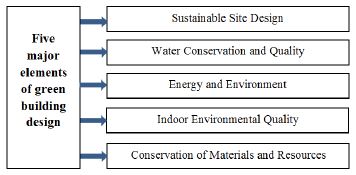
Fig.1: Elements of green building design by author (USGBC).
4.1. Water Systems
Water - often called the source of life - can be captured, stored, filtered, and reused. It provides a valuable resource to be celebrated in the process of green building design.
According to Art Ludwig in Create an Oasis out of Greywater, only about 6% of the water we use is for drinking. There is no need to use potable water for irrigation or sewage. The Green Building Design course introduces methods of rainwater harvesting, grey water systems, and living pools (BCKL, 2009).
The protection and conservation of water throughout the life of a building may be accomplished by designing for dual plumbing that recycles water in toilet flushing or by using water for washing of the cars. Waste-water may be minimized by utilizing water conserving fixtures such as ultra-low flush toilets and low-flow shower heads. Bidets help eliminate the use of toilet paper, reducing sewer traffic and increasing possibilities of re-using water on-site. Point of use water treatment (fig5) and heating improves both water quality and energy efficiency while reducing the amount of water in circulation. The use of non-sewage and greywater for on-site use such as site-irrigation will minimize demands on the local aquifer (Stephen & Harrell, 2008).
4.2. Natural Building
A natural building involves a range of building systems and materials that place major emphasis on sustainability. Ways of achieving sustainability through natural building focus on durability and the use of minimally processed, plentiful or renewable resources, as well as those that, while recycled or salvaged, produce healthy living environments and maintain indoor air quality. Natural building tends to rely on human labor, more than technology. As Michael G. Smith observes, it depends on "local ecology, geology and climate; on the character of the particular building site, and on the needs and personalities of the builders and users (Smith, 2002).
The basis of natural building is the need to lessen the environmental impact of buildings and other supporting systems, without sacrificing comfort or health. To be more sustainable, natural building uses primarily abundantly available, renewable, reused or recycled materials. The use of rapidly renewable materials is increasingly a focus.
In addition to relying on natural building materials, the emphasis on the architectural design is heightened. The orientation of a building, the utilization of local climate and site conditions, the emphasis on natural ventilation through design, fundamentally lessen operational costs and positively impact the environmental. Building compactly and minimizing the ecological footprint is common, as are on-site handling of energy acquisition, on-site water capture, alternate sewage treatment and water reuse (Smith, 2002).
4.3. Passive Solar Design
Passive solar design refers to the use of the sun’s energy for the heating and cooling of living spaces. The building itself or some element f it takes advantage of natural energy characteristics in its materials to absorb and radiate the heat created by exposure to the sun. Passive systems are simple, have few moving parts and no mechanical systems, require minimal maintenance and can decrease, or even eliminate, heating and cooling costs (BCKL, 2009).
Passive solar design uses that to capture the sun’s energy:
Homes in any climate can take advantage of solar energy by incorporating passive solar design features and decreasing carbon dioxide emissions. Even in cold winters, passive solar design can help cut heating costs and increase comfort (BCKL, 2009).
Solar buildings are designed to keep environment comfortable in all seasons without much expenditure on electricity 30 to 40% savings with additional 5 to 10% cost towards passive features. Major Components: Orientation, double glazed windows, window overhangs, thermal storage walls roof, roof painting, Ventilation, evaporation, day lighting, construction material etc. Designs depend on direction & intensity of Sun & wind, ambient temp., humidity etc. Different designs for different climatic zones.
4.4. Green Building Materials
Green building materials are generally composed of renewable rather than non-renewable resources and are environmentally responsible because their impacts are considered over the life of the product. In addition, green building materials generally result in reduced maintenance and replacement costs over the life of the building, conserve energy, and improve occupant health and productivity. Green building materials can be selected by evaluating characteristics such as reused and recycled content, zero or low off-gassing of harmful air emissions, zero or low toxicity, sustainably and rapidly renewable harvested materials, high recyclability, durability, longevity, and local production (Cullen, 2010).
The materials common to many types of natural building are clay and sand. When mixed with water and, usually, straw or another fiber, the mixture may form cob or adobe (clay blocks). Other materials commonly used in natural building are: earth (as rammed earth or earth bag), wood (cordwood or timber frame/post-and-beam), straw, rice-hulls, bamboo and stone. A wide variety of reused or recycled non-toxic materials are common in natural building, including urbanite (salvaged chunks of used concrete), vehicle windscreens and other recycled glass (Woolley , 2006).
One-half of the world’s population lives or works in buildings constructed of earth. Straw bale construction is now gaining in popularity and Many jurisdictions in California have adopted the Straw bale Building Code. Green Building Design favors natural building for its local availability, ease of use, lack of toxic ingredients, increased energy efficiency, and aesthetic appeal (NAOHB, 1998).
Several other materials are increasingly avoided by many practitioners of this building approach, due to their major negative environmental or health impacts. These include unsustainably harvested wood, toxic wood-preservatives, Portland cement-based mixes, paints and other coatings that off-gas volatile organic compounds (VOCs), and some plastics, particularly polyvinyl chloride (PVC or "vinyl") and those containing harmful plasticizers or hormone-mimicking formulations (Woolley , 2006).
4.5. Living Architecture
The environment like our bodies can metabolize nutrients and waste. Living Architecture focuses on these processes, integrating ecological functions into the buildings to catch, store, and filter water, purify air, and process other nutrients. Living Architecture also addresses biophilia, the documented health benefits associated with being in touch with living systems in the built environment (Susan, 2008).
Throughout history greening of outside walls and roofs of buildings has taken place. Reasons for doing so were the increase of insulation (keep cool in summer and keep cold out in winter), improved aesthetics, improved indoor and outdoor climate, reduce the greenhouse gases such as Carbon Dioxide (CO2), Carbon Monoxide (CO) and Nitrogen Dioxide (NO2) as well as increasing ecological values by creating habitats for birds and insects (Sheweka & Magdy, 2011).
4.5.1. Green roofs
serve several purposes for a building, such as absorbing rainwater, providing insulation, creating a habitat for wildlife, increasing benevolence and decreasing stress of the people around the roof by providing a more aesthetically pleasing landscape, and helping to lower urban air temperatures and mitigate the heat island effect (Vandermeulen, 2011)
There are two types of green roof:
1. Intensive roofs, which are thicker, with a minimum depth of 12.8 cm, and can support a wider variety of plants but are heavier and require more maintenance.
2. Extensive roofs, which are shallow, ranging in depth from 2 cm to 12.7 cm, lighter than intensive green roofs, and require minimal maintenance (Volder, 2014).
The term green roof may also be used to indicate roofs that use some form of green technology, such as a cool roof, a roof with solar thermal collectors or photovoltaic panels. Green roofs are also referred to as eco-roofs, vegetated roofs, living roofs, green roofs and VCPH (Wilmers, 1990). (Horizontal Vegetated Complex Partitions).
4.5.2. Green Walls
Also known as vertical greenery is actually introducing plants onto the building façade. Comparing to green roof, green walls can cover more exposed hard surfaces in the built environment where skyscrapers are the predominant building style (Jonathan, 2003).
According to Ken (Ken,2008), if a skyscraper has a plant ratio of one to seven, and then the façade area is equivalent to almost three times the area. So, if the building is covered two thirds of the façade, this have contributed to doubling the extend of vegetation on site. So a skyscraper can become green, thus increasing the organic mass on the site (Wilmers, 1990).
There are three types of Green Walls:
The green walls can be divided into three fundamental types according to the species of the plants; types of growing media and construction method.
1. Wall-climbing Green wall is the very common and traditional green walls method. Although it is a time consuming process, climbing plants can cover the walls of building naturally. Sometimes they are grown upwards with the help of a trellis or other supporting systems (Wilmers, 1990).
2. Hanging-down Green Wall is also another popular approach for green walls. It can easily form a complete vertical green belt on a multi-story building through planting at every story compare to the wall-climbing type (Wilmers, 1990).
3. Module Green Wall is the latest concept compared to the previous two types. It requires more complicated design and planning considerations before a vertical system can come to place. It is also probably the most expensive green walls method (Jonathan, 2003)
5. GREEN BUILDING BENEFITS
Green building is not a simple development trend; it is an approach to building suited to the demands of its time, whose relevance and importance will only continue to increase (USGBC)
6. CASE study
The study area has a typical Mediterranean climate. It is characterized by a long fairly warm season and a short slightly rainy temperature winter, favorable for thermophilic biological spectrum. Precipitation falls mainly during the colder season from autumn to spring. The prototype is therefore designed for the warm humid climate of Northern Western Coast Hinterland in Alexandria region (UNEP, 1995)
6.1. Localized Indigenous Knowledge (IK).
In addition to IK, Development professionals treasure this local knowledge, finding it extremely useful in solving complex problems of health, agriculture, education, and the environment, both in developed and in developing countries, enhancing the ways that knowledge has been adapted, applied, and disseminated.
Investigations from existing housing units within the study area habitat demonstrated the combination of indigenous architectural elements leading to much more efficient buildings in terms of adaptability to IK.Major IK concepts applied:
1. Courtyard. Courtyard homes are more prevalent in the study area, as an open central court can be an important aid to cooling house in warm weather. Courtyard draws fresh air down through the wind catch. The comforts offered by a courtyard-air, light, privacy, security, and tranquility - provides the shadows are properties nearly universally desired in human housing. Courtyard used for many purposes including cooking, sleeping, working, playing, gardening, and even places to keep animals.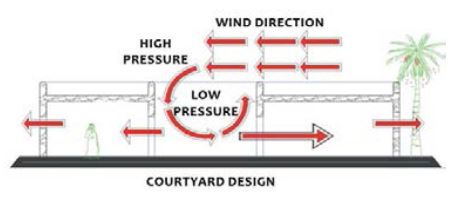
Fig.2: Courtyard design by author (Amany, 2013)
2.Thickness of stone walls. The walls are designed to provide insulation, sunlight filters through increase wall thickness (40-50 cm).
3. Roof. It is placed a mixture of sand and lime mortar above the linoleum protect the bishop from the impact of the sun's heat and reduces the permeability of water falling from the rain in the winter.
4. Narrow openings. Narrow openings and high from the ground to prevent the entry of heat during the day for the inside and maintain them for the night
6.2. Housing Prototype Suggestion
This study produced prototype referred to as Typical Housing Prototype (THP) which is built with a central courtyard, singlestory two bedrooms. The plan of the prototype is shown in Fig.3 below.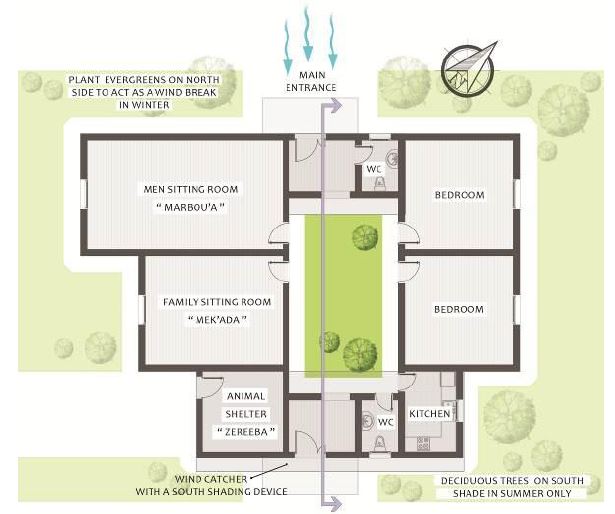
Fig.3: House prototype floor plan by author (Amany, 2013)
Features were considered to optimize the integration of passive design strategies. Building orientation determines the amount of solar radiation it receives. In addition to other elements such as Evergreen trees were planted on north side to act as a wind break in winter, while deciduous trees on south side to shade in summer only.
Courtyard design. The central courtyard allows spaces for relaxation and interaction of occupants keeping their activities away from neighbors in addition to passive cooling strategies. It achieves enough daylight penetration, reduces solar heat and promotes cooling breezes while keeping out hot and dusty wind.
Sun angles and Shadings. The design doesn’t oversize the amount of south-facing windows as oversizing can lead to overheating. Horizontal exterior overhangs are used on the south side of the building to block direct summer sun. Ideal proportions for an overhang are calculated by latitude (Alexandria, 31.2000° N).The overhang is large enough to block summer sun, but doesn’t block sun in winter.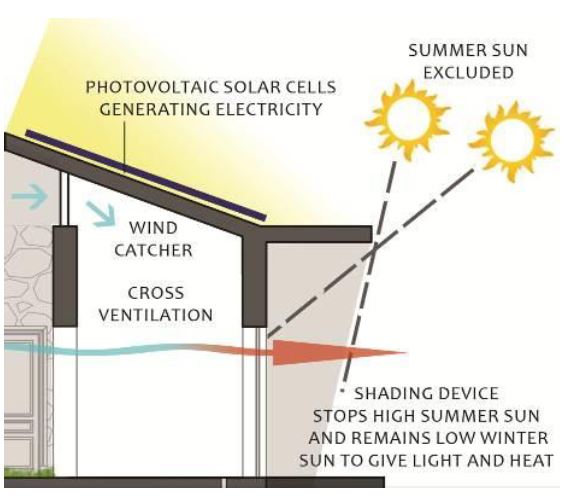
Fig.4: South horizontal overhangs by author (Amany, 2013)
Thermal Mass. The walls of the house are thick and massive. The high-mass walls are cooled from the cool night time temperatures. In turn, the walls then cool the occupants during the day by accepting the heat radiating from their bodies.
Construction Materials.
Walls: Solid 8" Masonry wall which could be double wall for maximizing thermal mass.
Roof Construction: Flat light weight concrete (20 cm) and plaster (1 cm).
Floor: Slab on Grade covered by carpet or casework.
Rain water harvesting. The roof of the building consists of gutters or pipes that deliver rainwater falling on the rooftop to the storage tank. Harvested water can be used for toilet flushing and garden irrigation.
Aquifer Water. Well pumps are built to be used for extracting water from an underground source.
Fig.5: Cross section of the suggested prototype by author (Amany, 2013)
Energy Systems.
Biogas Plant production. Biogas is one of many renewable energy systems that provide greater independence at very low cost. Produced gas from anaerobic digestion of organic material will usually be piped from the top of the tank to a biogas cooking stove and/or biogas lights.
Photovoltaic (PV array). Photovoltaic panels are installed on south-facing roof which is inclined with an angle to maximize the amount of electricity produced.
Solar domestic hot water. Solar hot water systems are used to collect energy from the sun in panels or tubes to produce domestic hot water used in the house.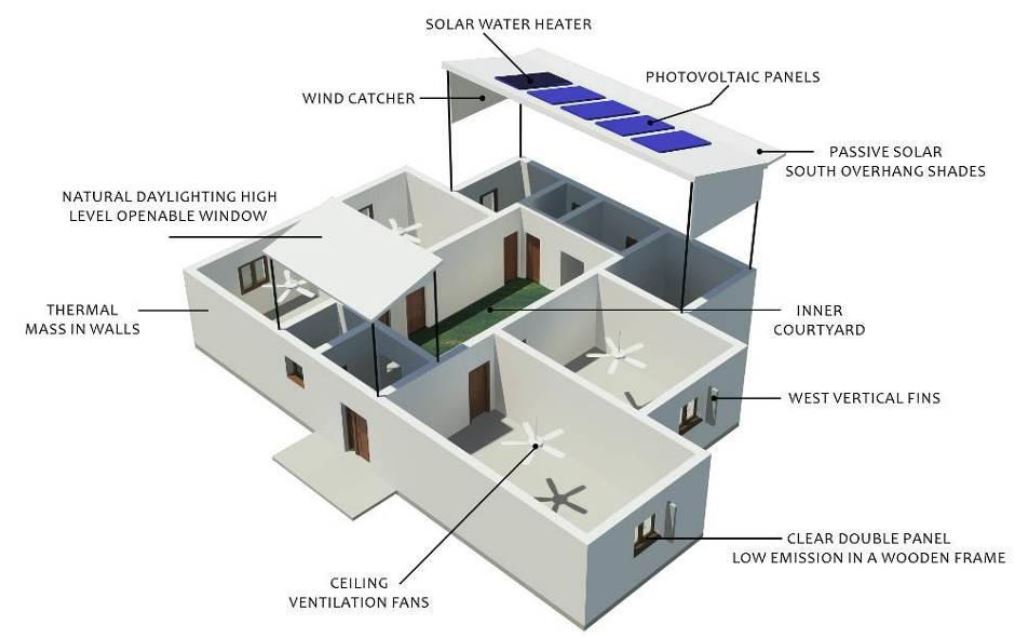
Fig.6: 3D model of the suggested prototype by author (Amany, 2013)
Conclusion
Principles of Green Architecture are: Water features and their management; natural building design; passive solar design; green building materials; living Architecture. These principles are applied in a sustainable fashion to achieve an eco- friendly building.
Any architect has the ability to change an entire building process by specifying materials with low carbon dioxide emissions.
Green building standards are available for almost every type of building on a global basis and these standards are well developed and are regularly being updated; they cover all phases of a building’s life cycle from design through demolition.
Buildings that have been designed according to sustainability standards need to be operated and maintained according to these same standards.
Buildings that were built prior to enacting these sustainability standards can also be upgraded to meet the standards that have subsequently been put in place.
Green buildings must have a number of common components: these include a focus on energy efficiency and, in some cases, renewable energy; the efficient use of water; the use of environmentally desirable building materials and specifications; a minimization of the waste and toxic chemicals generated in the building's construction and operations; good indoor air quality; and an eye on so-called "smart" growth and sustainable development.
Green architecture produces environmental, social and economic benefits. Environmentally, green architecture helps reduce pollution, conserve natural resources and prevent environmental degradation. Economically, it reduces the amount of money that the building's operators have to spend on water and energy and improves the productivity of those using the facility. And, socially, green buildings are meant to be beautiful and cause only minimal strain on the local infrastructure.
Traditional building materials are to be adapted to meet code-required standards for health and safety in contemporary buildings. Not only are they cost effective and environmentally friendly, but, when used correctly, these natural alternatives match the strength and durability of many mainstream construction materials.
New building technologies, and in particular ICT automation and new materials, are to constantly be introduced to enhance the sustainable building process with the goal of reducing the impact of the building on the surrounding environment by using resources more efficiently (e.g. energy, water); enhancing and protecting the health and well-being of the occupants; and reducing any negative impacts.